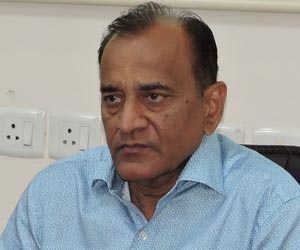The Economic Survey of India (ESI) has a short shelf-life in the public narrative, because it gets overshadowed by the Union Budget that is presented soon after. But ESI 2018 will have a greater longevity because of its two ground breaking chapters. They deal with issues that have always been recognised as important for the country’s economic growth but have somehow never before got the desired focus in the annual economic document. They are matters which may have no instant solutions but are crying for systemic revamp of policies and mindsets that ought to have been initiated yesterday.
The two standout chapters relate to gender parity and judicial promptness. ESI 2018 does not offer lip service to the issues but elaborates, with well-researched data set out in the form of charts, graphs and tables, the gaps which exist and the roadmap to bridge them. They are suggestions which a Government cannot afford to ignore, in the interests of both its own credibility and that of the larger socio-economic good. It is too early to determine if the incumbent regime can reverse the slide of decades in these areas, but there are some indications at least, both in the recently announced Budget and certain ongoing Central schemes, that the Government is moving in the right direction.
The justice delivery system has been a subject of intense discussion for long, and there is agreement that the wheels here move rather slowly in the country. Various factors have led to the crisis of case backlogs numbering several lakhs across the courts. Solutions have also been suggested, a few implemented, and a few others are in various stages of activation. But rarely has this matter been studied from the perspective of harm such delayed justice has been doing to the country’s economic environment, especially when the litigations have to do with economic issues. ESI 2018’s chapter, titled, “Ease of Doing Business’ Next Frontier: Timely Justice”, presents both a grim picture and a way out. The authors could not resist quoting these memorable lines from Hamlet:,/i> “For who would bear the Whips and Scorns of time/The Oppressor’s wrong/The Law’s delay”.
Although India has dramatically improved its standing in the Ease of Doing Business ranking of the World Bank and broken into the top-100 club, it still does poorly in the parameter relating to the enforcement of business contracts. While there has been a marginal improvement — from 172 to 164 in the ranking — India is behind even Pakistan, Congo and Sudan. As ESI 2018 notes, “The importance of an effective, efficient and expeditious contract enforcement regime to economic growth cannot be overstated. A clear and certain legislative and executive regime backed by an efficient judiciary that fairly and punctually protects property rights, preserves sanctity of contracts, and enforces rights and liabilities of parties is a prerequisite for business and commerce.”
The message here is that the judicial system must be ‘punctual’ in deciding cases involving litigations on the enforcement of contracts etc. Justice delayed is not just justice denied; it adversely pacts economic growth too. Various mechanisms have evolved over the years to expedite economic cases, such as the establishment of economic tribunals. However, ESI 2018 is scathing in its observation that these tribunals have not yielded the desired result. Based on material gleaned from various authorities, the survey notes that there is a pendency of close to 1.8 lakh cases in the six most such prominent tribunals in the country. Worse, the pendency has risen over the years. There has been a 25 per cent increase in the size of unresolved cases since 2012.
The basic idea behind establishing the economic tribunals was to unburden the load of High Courts, and thereby ensure faster clearance of cases. But even the first purpose has remained unachieved. The survey studied three sets of economic cases pending at five High Courts: arbitration, taxation and company issues. It found that the total backlog in these High Courts by the end of 2017 (figures supplied by the National Judicial Data Grid) was about 3.5 million. While pendency in all of these types of cases was high, those pertaining to taxation matters was particularly alarming — at nearly six years per case.
While the survey has given a number of reasons for the rising pendency in High Courts, it has identified the expansion of the Special Leave Petition (SLP) mechanism as a primary cause of economic litigations before the Supreme Court. The SLP was initially introduced to deal with ‘exceptional cases’, but its ambit has now been enlarged, and among the worst sufferers of delayed justice as a consequence have been litigants involved in economic matters. Such pendency has not only impacted economic progress but also contributed to the escalation in project costs. ESI 2018 studied the number and value of Government projects in six infrastructure Ministries that are currently ‘stayed’ through court injunctions, as well as the average duration of their stays. According to the survey document, “The project costs (stocks) of stayed projects — at the time they were originally stayed — amounted close to Rs. 52,000 crore.”
Now for the other path-breaking chapter on gender parity, named somewhat provocatively, “Gender and Son Meta-Preference: Is Development Itself an Antidote?” Like with the issue of judicial delays, the role of gender justice in the country’s economic wellbeing has been often discussed. What ESI 2018 has done is to contextualise it in an aggressive manner — such that it is impossible to be unaffected by its passionate appeal as well as by the hard data. While India has done well over the last decade or so in various parameters on women’s development and attitudes and outcomes regarding gender discrimination, it still lags behind on indicators such as employment, child-gender preference and contraceptives. In short, on various indicators of women empowerment, which are essential to add to the GDP growth, India has a long way to go.
The survey document presents two hard realities which need to be addressed and which arguably are at the core of gender justice (largely in the social sense). The first is the common case of ‘son preference’. ESI 20128 offers the readers a graph that plots the sex ratio at birth for countries in 1970 and 2014 against their level of real per capita income. The story here is that India is “well above the regression line, suggesting that there are many more males to females after accounting for development levels”. In addition, the survey finds that there is a “negative correlation between income and sex ratio”. It cites the examples of Haryana and Punjab, two of the country’s richest States, where the sex ratio is at an alarming high level (though Haryana has seen an improvement in recent years). The survey quotes studies which have concluded that about 40 million women in India were “missing” — largely by a combination of sex-selective abortion as well as neglect of the girl child after birth.
The second reality is what ESI 2018 has interestingly termed, “Son Meta-Preference”. In this section of the chapter, the survey delves into a host of statistics to observe that “son preference can also manifest itself in a subtler form”. The son ‘meta’ preference essentially means that a couple will keep having children until it gets a male child. Families thus become larger and the girl child eventually gets little of the resources which are at the family’s command. Once a family gets a male child, the flow of children generally stops. The exception is when the first-born is a male; couples still tend to have more children in the hope that they will be males. The number of “unwanted” girls, who were born despite parents not wanting them, has been estimated at 21 million. Such mindsets have not just created a skewed sex ratio but also reduced women to second-class citizens in many cases. The result is that the vast numbers of women that comprise the Indian population have hardly had a real chance to be contributors to the nation’s economic growth; instead, they have been turned into liabilities. Just what India is missing out on by consigning women to the margins is evident from the following quote of International Monetary Fund (IMF) chief Christine Lagarde: Women’s participation in the workforce to the level of men can boost the Indian economy by 27 per cent.
The Union Government’s Beti Bachao, Beti Padhao, drive has been of some considerable success: Sex ratios have improved and more families have begun to educate the girl child — even beyond the primary and secondary school levels. But sustained success will need joint effort. As the survey says, “Because the challenge is historical and long-standing, no one stakeholder is responsible for creating it or solving it. On gender, society as whole… must reflect on a societal preference…”
(The writer is senior political commentator and public affairs analyst)
(Views expressed are of the author and do not necessarily reflect the views of the VIF)
Image Source: https://itc2u.wordpress.com/2013/










Post new comment